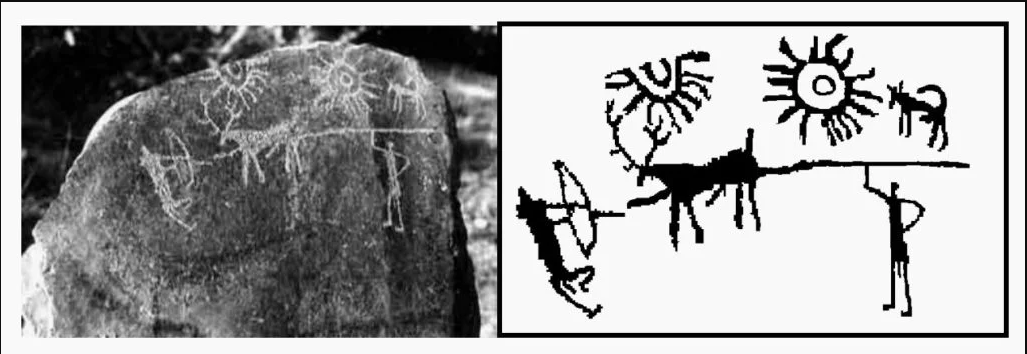Scientists in India have discovered rock art that appears to depict a supernova and the surrounding stars, buried inside the wall of an ancient dwelling place. Thought to date from 3,600 BC, the carving would be the oldest-known depiction of such a cosmic event.
In archaeology, rock art is human-made markings placed on natural stone. The newly-found drawing shows what at first glance appears to be hunters and animals beneath a sky with not one but two bright sun-like objects, Artnet.com wrote.
Because the sun and the full moon never appear that close together in the sky, astrophysicist Mayank Vahia and his team at Mumbai’s Tata Institute of Fundamental Research have introduced a theory that it must have been a supernova, a star exploding some hundreds or thousands of light years away.
Even after a supernova fades, high-intensity X-rays will continue to emanate from the site of these catastrophic events for hundreds of thousands of years to come. Vahia knew that the ancient home where the petroglyphs had been founded dated to 2,100 BC, and the area had first been settled in 4,100 BC.
Based on data collected by astronomers, Vahia was able to pinpoint one supernova from the time period, supernova HB9 from around 3,600 BC, that would have been large and bright enough to have been seen from earth.
More tellingly, if one compares the known location of HB9 and the surrounding stars, a hidden meaning becomes clear in the petroglyph: the other figures aren’t part of a hunting scene, but instead represent the nearby constellations. This makes the whole painting, in effect, likely one of the earliest star charts.
“The whole hunting scene along with the moon and the supernova fits quite well into the pattern of stars in the sky,” wrote Vahia in a paper for the Indian Journal of History of Science.
“The image of one of the hunters coincides with the Orion; the central stag is same as the Taurus. The hunter on the right may have been formed from stars of Cetus and other animal on the right may be Andromeda and Pegasus. The long, curved line in the carving, traditionally interpreted as spear, may well be an arc of bright stars.”
If this theory is correct, the rock art would also be the world’s oldest-known sky chart recording a particular event. It could, of course, be a coincidence, but the case for an ancient astronomer at work remains quite compelling.


